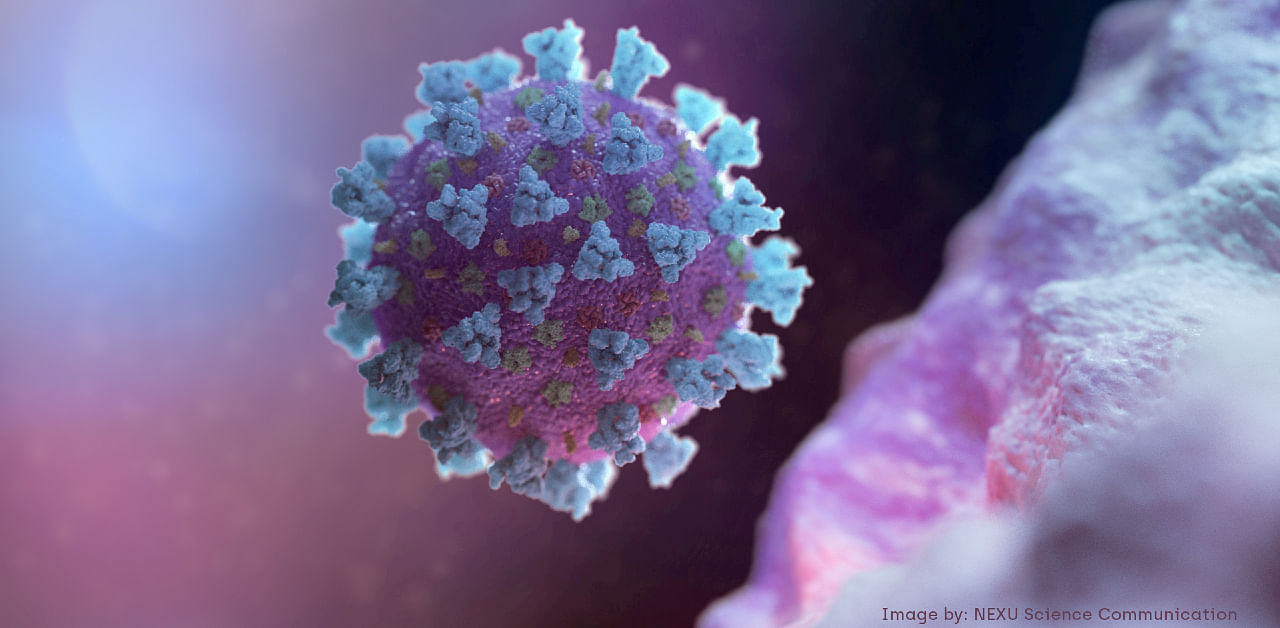
Smoking tied to higher levels of Covid-19-associated genes
Smoking appears to increase the genetic contribution to Covid-19 infections, a small study suggests.
The new coronavirus enters the body by hijacking proteins on the surface of healthy cells, in particular a protein called angiotensin-converting enzyme 2 (ACE2). In adult lungs, just three cigarettes can increase the activity of genes with the information for building ACE2, according to an international research team led by Alen Faiz of Australia's University of Technology Sydney. Faiz told Reuters that ACE2 levels were lower in people who had stopped smoking for more than a month.
"Our preliminary data suggest that second-hand smoke exposure of 1-year-old children ... increased ACE2 expression in their airways," he said. His team also found higher levels of the ACE2 genes in the nose compared to the lung airways, indicating the nose may be more easily infected.
But while it is known that the coronavirus uses ACE2 to break into cells, there is as yet no proven link between higher expression of the genes and the severity of Covid-19 infection, Faiz said. The study report, posted on Wednesday as a preprint on medRxiv, has yet to be certified by peer review.
Pulse oximeters may help Covid-19 patients at home
A device that monitors oxygen levels in blood could be a useful addition to the home medical cabinet when someone has Covid-19 but is not sick enough to be hospitalized. Researchers at the Johns Hopkins Health System studied 118 adults age 40 and older who had a positive Covid-19 test but were well enough to be sent home to recover.
Study participants "checked oxygen levels at home using a portable home pulse oximeter such as the type you can purchase at the drug stores," study leader Dr. Paul Blair told Reuters.
For patients with Covid-19, especially older individuals and those at increased risk because of medical conditions, a home pulse oximeter may be a worthwhile tool, he said. "When the oxygen levels started to drop, persons were at higher risk of needing to be hospitalized."
Half of the patients still had symptoms more than 20 days after their diagnosis, and roughly one-third were still not back to normal after a month. Weakness and fatigue were especially persistent, the researchers reported on Thursday, in a paper posted on medRxiv ahead of peer review.
Modified 'intubation boxes' reduce infection risk
A tool used by doctors and nurses to protect themselves from the coronavirus is flawed but a modification can improve it, researchers say. To insert breathing tubes into patients, clinicians have been placing plexiglass boxes over patients' head and shoulders to contain any virus particles the patients might emit; the doctors then slip their hands through holes in the sides.
But droplets, or aerosols, that can contain virus particles are leaking out, researchers reported on Thursday in Annals of Emergency Medicine. Using a test aerosol the size of virus-containing particles, they compared a commercially available plexiglass intubation box to a modified box with a vacuum system to filter the air.
Aerosols in the surrounding air "significantly exceeded allowable safety levels" with the typical box but were fully contained by the addition of a vacuum and air filtration, they said. The researchers have applied for Early Use Authorization for their modified box, which they say could also be used to isolate awake Covid-19 patients on ships and in medical facilities.
Variant of gold-standard diagnostic test may be faster
Researchers say a variation of the gold standard test for diagnosing Covid-19 removes unnecessary steps and allows faster and less expensive testing, with at least equal accuracy. The goal of the test, called polymerase chain reaction, or PCR, is to look for RNA and DNA, the genetic material in the virus.
Normally, in a version of the test known as quantitative PCR (qPCR), all the materials are mixed together in a single large test tube, but the results could be affected by contaminating substances such as nasal cavity contents obtained during a swab for Covid-19 testing.
To get around this problem, most qPCR tests are preceded by a purification step to remove contaminating substances. But "digital droplet" PCR (ddPCR), an established technique, can effectively identify SARS-CoV-2 genetic material using unprocessed cells without any purification steps, the research team from the University of California San Francisco reported on Thursday on medRxiv ahead of peer review.
By making it possible to bypass the RNA extraction step, ddPCR may help ease the coronavirus testing bottlenecks caused by shortages of the extraction chemicals as well as speed the delivery of results to patients, the researchers said.